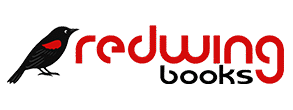Survey of Traditional Chinese Medicine
In the early 1970’s, Father Claude Larre met Dr. Jean Schatz, a physician acupuncturist with a special interest in the classical medical texts and well-developed clinical skills. Since George Soulie de Morant’s massive work appeared in 1959, Dr. Schatz, as well as other French physicians, had been applying acupuncture in their clinical settings. Dr. Schatz, convinced of the value of acupuncture and wanting to know more, continued his education in Taiwan with Wu Wei Ping in the early 1960s.
Father Larre had returned from 20 years in Asia. From 1947 to 1952 he studied the Chinese language while finishing his theological studies to become a Jesuit priest. He was ordained in 1952. He then lived in Vietnam (1956-1966), after short stays in Japan and the Philippines. In Paris in 1966 he completed his PhD in Chinese philosophy at La Sorbonne with his translation and interpretation of Chapter Seven of the Huainanzi, “On the Vital Spirit of a Human.”
Father Larre gathered people who were interested in learning and sharing knowledge. In particular, a more accurate grasp of Chinese culture and civilization. Isabelle Robinet and Sister Ina Bergeron joined. Elisabeth Rochat de la Vallée, then an advanced language and philosophy student, was introduced to this small group very early on. It was called the “Jade Circle,” and was the forerunner of the Paris Ricci Institute. Elisabeth, Dr. Schatz and Father Larre, met weekly at the hone of sinologist Alice Fano. This was the first group to translate and study the classical medical texts in Paris. At the time very few Chinese medical texts had been translated at all, few of these were solid translations.
By the third year of their study, they were more secure in their interpretation of the text. Elisabeth left in 1974 to spend a year in Taiwan to improve her spoken Chinese (the Cultural Revolution blocked access to Mainland China). When she returned in 1975, Father Larre, Dr. Schatz and Elisabeth decided to start teaching what they learned in their reading of the texts. After a year of teaching, they decided to give a formal frame to this work and founded the European School of Acupuncture in Paris in 1976.
The European School of Acupuncture is aimed at people who already have a basic training in Chinese medicine, people interested in China and its vision of life, and those who wish to work with traditional texts. Its originality lies in three aspects:
- The rigorous approach to classic medical texts and their accurate study, which methodically investigates theoretical and clinical questions by relying on an overall vision of the Chinese medical literature.
- The medical questions studied are developed in connection with the great texts of traditional medical thinking, whether they be Confucian, Taoist or other, particularly those that are contemporary with the development of medical theory in the few centuries around the beginning of the Common Era.
- An opening onto practice and experience. This research is part of a dialogue and experience of sharing with the participants, which continues in workshops offering a real application of a traditional discipline (for instance, calligraphy).
From this common work, Father Larre, Dr. Schatz and Dr. Rochat co-authored A Survey of Chinese Medicine, published in 1979 (English translation published in 1986). It is a philosophical overview of Traditional Chinese Medicine. its roots in the Chinese language, and the way of Chinese thought which created the Chinese healing arts. This text emphasizes the critical importance of examining ancient Chinese texts which are the basis for Traditional Acupuncture.
